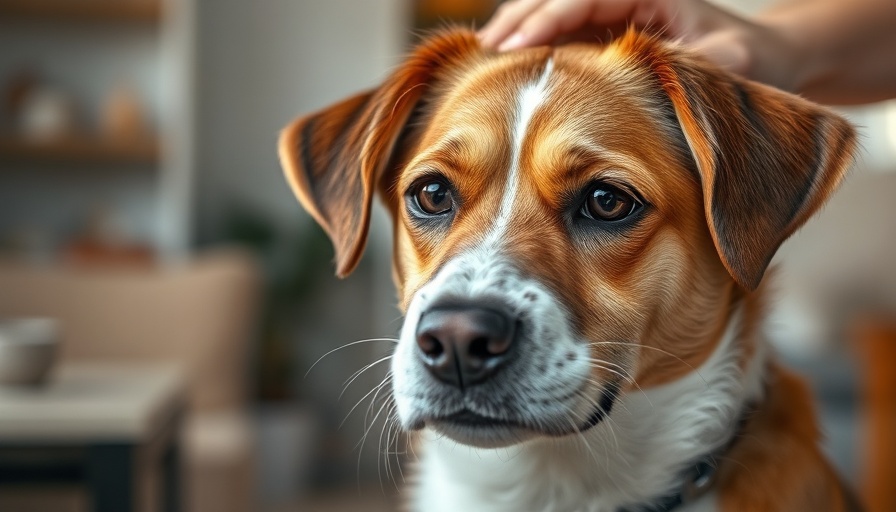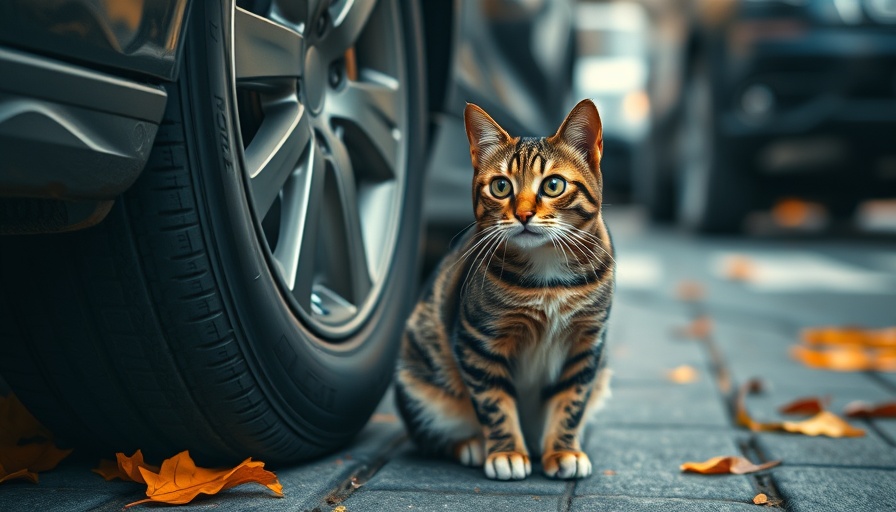
Understanding Fleas: A Common Threat to Your Canine Friend
When it comes to keeping our furry companions healthy, understanding common parasites such as fleas is crucial. Fleas are tiny parasites that can wreak havoc on your dog's skin and overall well-being. Just a few millimeters in size, these pests can easily be mistaken for specks of dirt or even ants, especially if you’re unfamiliar with their distinct appearance. Recognizing their signs early can save your dog from unnecessary discomfort and help ensure they remain safe and healthy.
What Do Fleas Look Like?
Fleas can vary in color from dark brown to black and have an oval-shaped body complete with six legs. These little creatures are known for their incredible jumping ability, enabling them to leap onto dogs from other animals or infested environments. Additionally, they can leave a trail of flea dirt, which appears similar to regular dirt, but is actually digested blood mixed with feces. This dirt is a strong indicator of a flea presence, often mixed quietly in your dog's fur.
Recognizing the Symptoms of Fleas
Dogs affected by fleas can experience a host of uncomfortable symptoms. Look out for excessive itching, loss of hair, red or irritated skin, and tiny bumps that can develop due to scratching. In severe cases, flea infestations can lead to lethargy and a decrease in appetite. Here’s a brief list of signs to monitor:
- Hair loss
- Frequent itching
- Red, irritated skin
- Tiny skin bumps
- Visible fleas or flea dirt
- Decreased appetite
- Lethargy
Effective Prevention and Treatment Strategies
Taking preventive measures is essential to keep fleas at bay. Regularly grooming your dog with a flea comb is a practical first step. This tool effectively catches fleas and flea dirt, helping to identify an infestation early. It’s also wise to consult with your veterinarian regarding flea preventatives such as Credelio Quattro, which not only prevents but also can help treat an infestation if it occurs.
The Importance of Immediate Action
If you notice any signs of fleas on your dog, it’s crucial to act quickly. Contact your veterinarian to discuss the best course of treatment. They can offer tailored recommendations based on your dog’s specific needs. Moreover, keeping up with preventive care can significantly reduce the chances of fleas making a comeback.
Human-Parasitic Dynamics: Fleas and People
Interestingly, while fleas can jump onto humans, they don’t live on our skin, which is a relief for many. However, it’s imperative to understand that fleas transmitted from dogs can easily infest your living environment, leading to a broader problem. Therefore, treating your pet is only part of the solution; your home may also need a thorough cleaning to eliminate any potential hiding spots.
Creating a Healthy Environment
To further reduce the risk of flea infestation, consider these environment management strategies:
- Regular vacuuming of carpets and upholstery
- Washing your dog’s bedding frequently in hot water
- Grooming your dog regularly and trimming their fur
By maintaining a clean living space, you’re not only providing a healthy refuge for your dog but also preventing the next flea invasion.
Conclusion: Compassionate Care for Our Pets
Keeping your dog flea-free is a vital part of responsible pet ownership. An understanding of flea appearance, symptoms of infestation, and preventive measures can significantly improve your dog’s quality of life. By adopting proactive practices and remaining vigilant, you’ll not only protect your furry friend but also nurture the lasting bond you share.
If you're looking for further guidance or assistance with flea prevention strategies tailored specifically to your pet's needs, don't hesitate to reach out to your local vet or pet care specialists. They can provide invaluable insights to ensure your four-legged companion remains happy, healthy, and flea-free!
 Add Row
Add Row  Add
Add 


Write A Comment